[originally published at Permaculture News]
We permaculturalists like to say there is no such thing as a weed, just a plant whose virtues we haven’t yet learned to appreciate. But when we talk about sheet mulching, we’re usually not concerned just with improving the soil, we also intend to smother the existing, unwanted vegetation so we can start fresh. In fact, I will bet you that every single time you hear someone say a sheet mulch " didn’t work", what they mean is that it failed to kill the weeds. Let’s call a spade a spade: if you’re sheet mulching, you want the weeds to die, and if it doesn’t work the first time, you want to know why not.
In any given climate, some plants will be more difficult to smother than others. For example, some posters to permaculture forums have tried and failed repeatedly to smother Bermuda grass (Cynadon dactylon) and bindweed (Convolvulaceae), while I’ve had little trouble sheet mulching over these at any time of year in my own climate. I’ve now discovered one plant that requires special treatment in my climate — trumpet vine (Campsis radicans) — and I’d like to share my experience in attempting to eliminate it from my garden.
First, a little about the location. I’m in eastern Kansas, in the central United States, just east of the Great Plains. The soil is extremely heavy clay, high in nutrients but difficult to work and counterproductive to till unless it is very dry. The summers are variable; when they are mild (27°C/81°F) both wild and domesticated plants grow vigorously nonstop from June until September, but when a summer is hot (40°C/104°F) and dry, the year effectively has two growing seasons with a lull of 6-8 weeks when the only creatures growing are grasshoppers.
Having converted my own property (by sheet mulching, never tilling) to mostly perennial food plants, I turned to an elderly neighbor’s spectacularly overgrown back yard to grow annual cash-crops for market. She agreed to let me garden there in exchange for taming the vegetation and giving her some of each year’s tomato crop. Her lot featured an overstory of giant ragweed (Ambrosia trifida), but once I removed that for use as green matter in another sheet mulch project, I found a densely tangled undergrowth of unwanted and unpleasant plants, dominated by trumpet vine.
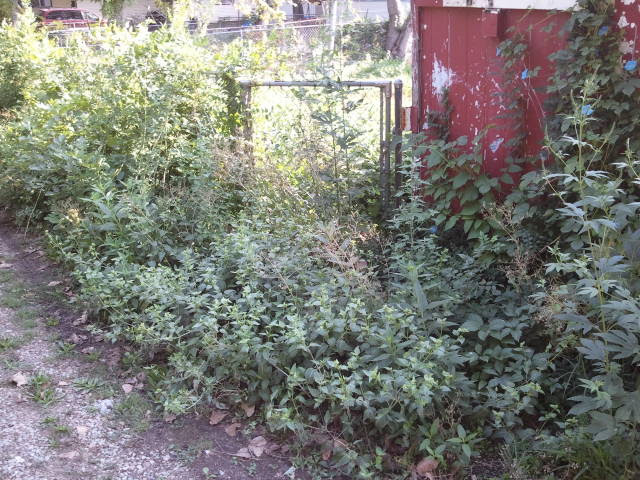

Trumpet vine is native to this part of the world, and cultivars are sold openly as decorative plants. A neighbor across the alley from the property in question probably planted it on purpose at some time in the past. Unfortunately in the damaged habitat of a backyard garden it spreads aggressively both above and below ground and is very difficult to get rid of due to its large (up to 7 cm thick) woody roots. I have broken a fiberglass shovel handle trying to uproot the stuff. While conducting home inspections I have found vines entering an attic via the eave soffit and twining through the darkness for several meters before springing out through a roof vent; I’ve also found it entering a basement through a crack half a meter below grade. Mowing it slows it down, but the coppiced stems that result grow thicker and tougher until they can stop a mower blade. Needless to say, domesticated garden plants cannot compete with it, and aside from possibly feeding it to goats, I do not think it has a positive role to play anywhere closer than Zone 5.
Since I hadn’t had to battle trumpet vine on my own property, I was curious to see what a simple sheet mulch could accomplish against such an adversary. I began clearing the neighbor’s yard in late August of 2012, laying down thick cardboard (over 1 cm thick) and reusing the weeds as green matter as I went. Once the weeds had wilted, I added a sprinkling of compost and a thick layer of dead leaves, then thoroughly watered the whole thing.
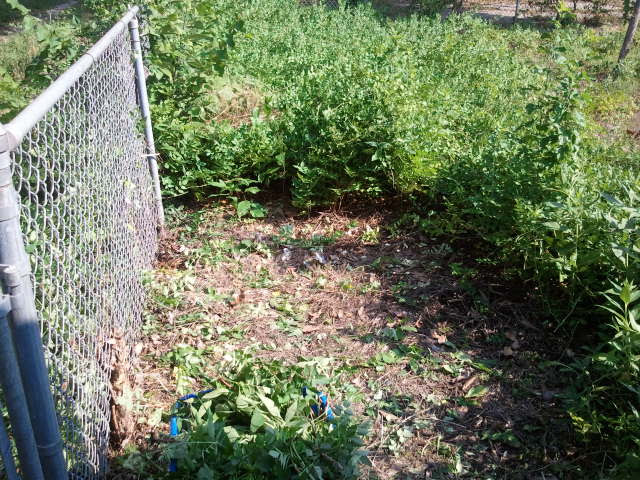
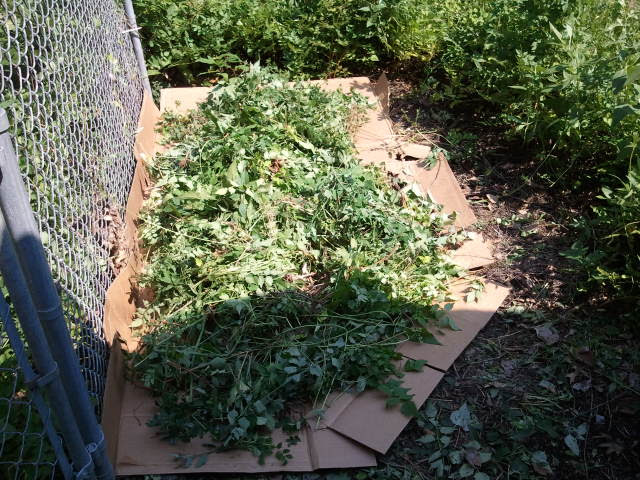
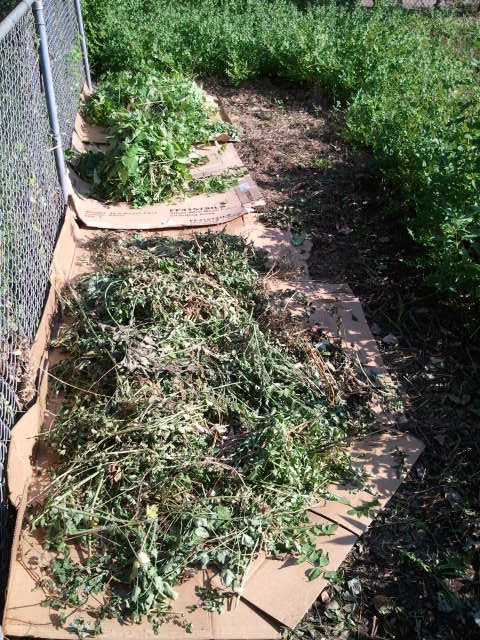
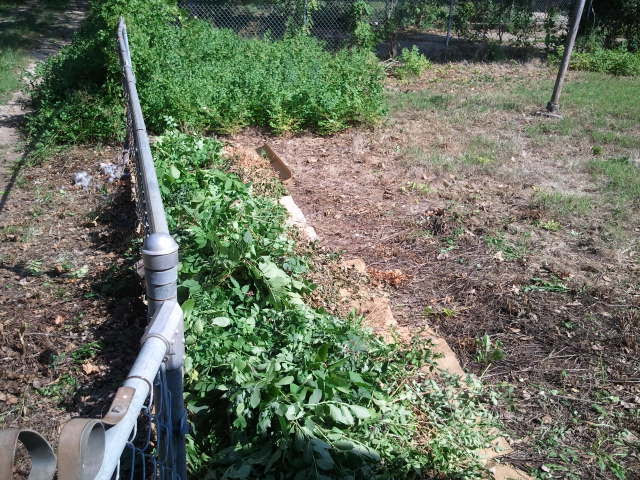
By spring (2013) the mulch had decomposed enough for planting, and I had a productive season, but the trumpet vine kept coming back from the roots. Every few days I had to pull it up, trim it back or dig it up — whatever I could do without disturbing the crops. I’m ashamed to say I tried agricultural vinegar and even Roundup on the blasted stuff, to no lasting effect! Meanwhile, a regimen of regular mowing supplemented by periodically digging out vine roots allowed the grass to reclaim the adjacent lawn so that I no longer had to defend the edges of the garden from 3-meter-long encroaching vines.
By June of this year (2014) I was ready to expand the garden and reduce the lawn, and I had an abundance of dead wood available, so I decided to try a layer of wood beneath the usual green and brown matter of my next sheet mulch. With a couple of friends’ help, we doubled the size of the garden in a few hours, first taking care to dig up all the trumpet vine we could in the area, then laying down thick cardboard, about 10cm of wood, compost, another 10cm of wilted weeds, and a top dressing of dead leaves.
In retrospect, my mistake was not waiting for the vines to go dormant. This being a mild summer, the vines grew up through the cardboard during July and August, twining themselves through the layer of wood until it became clear I would have to take it all apart and start over. This proved to be very labor-intensive.
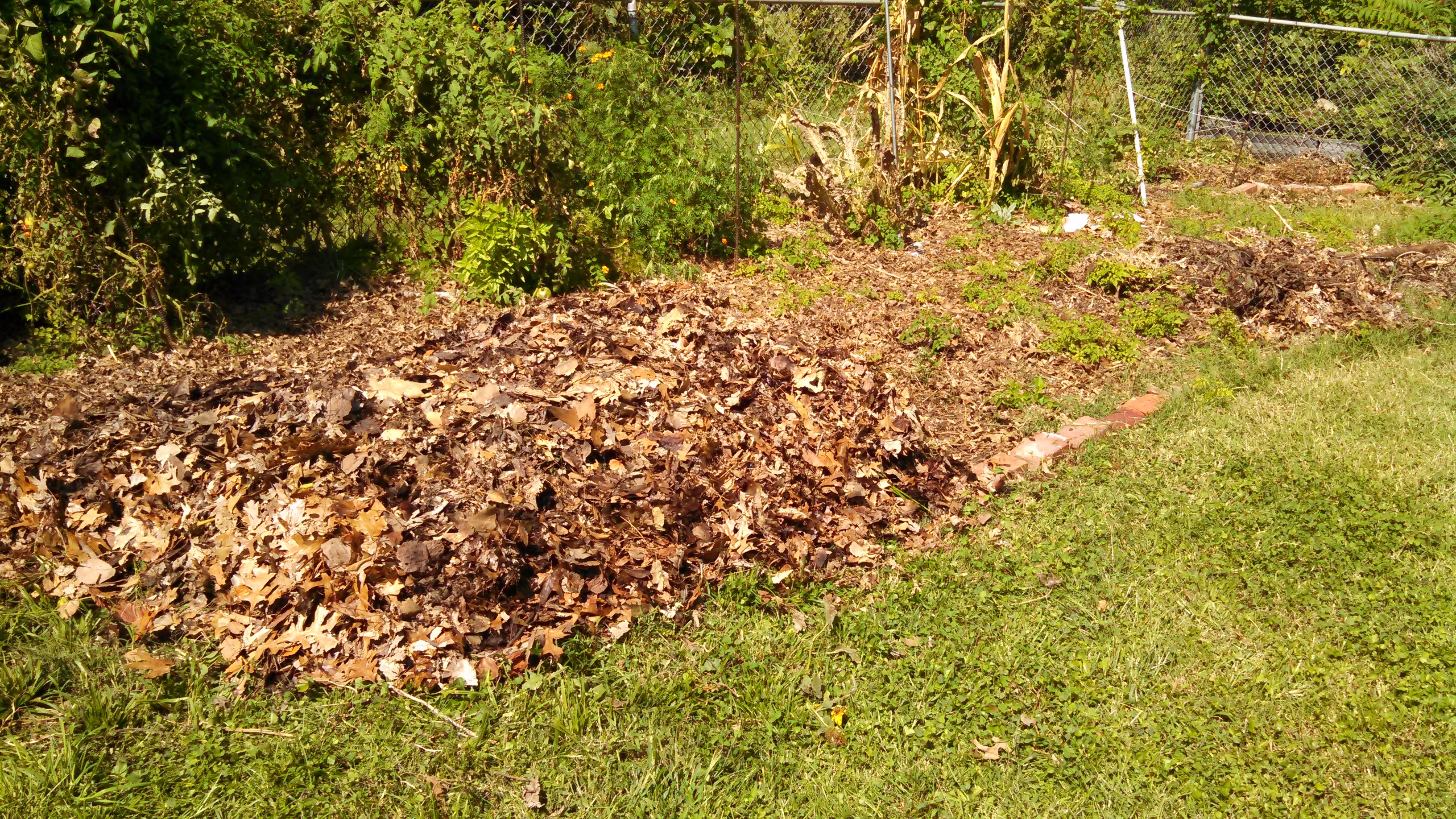
previous year’s ordinary sheet-mulched garden in background
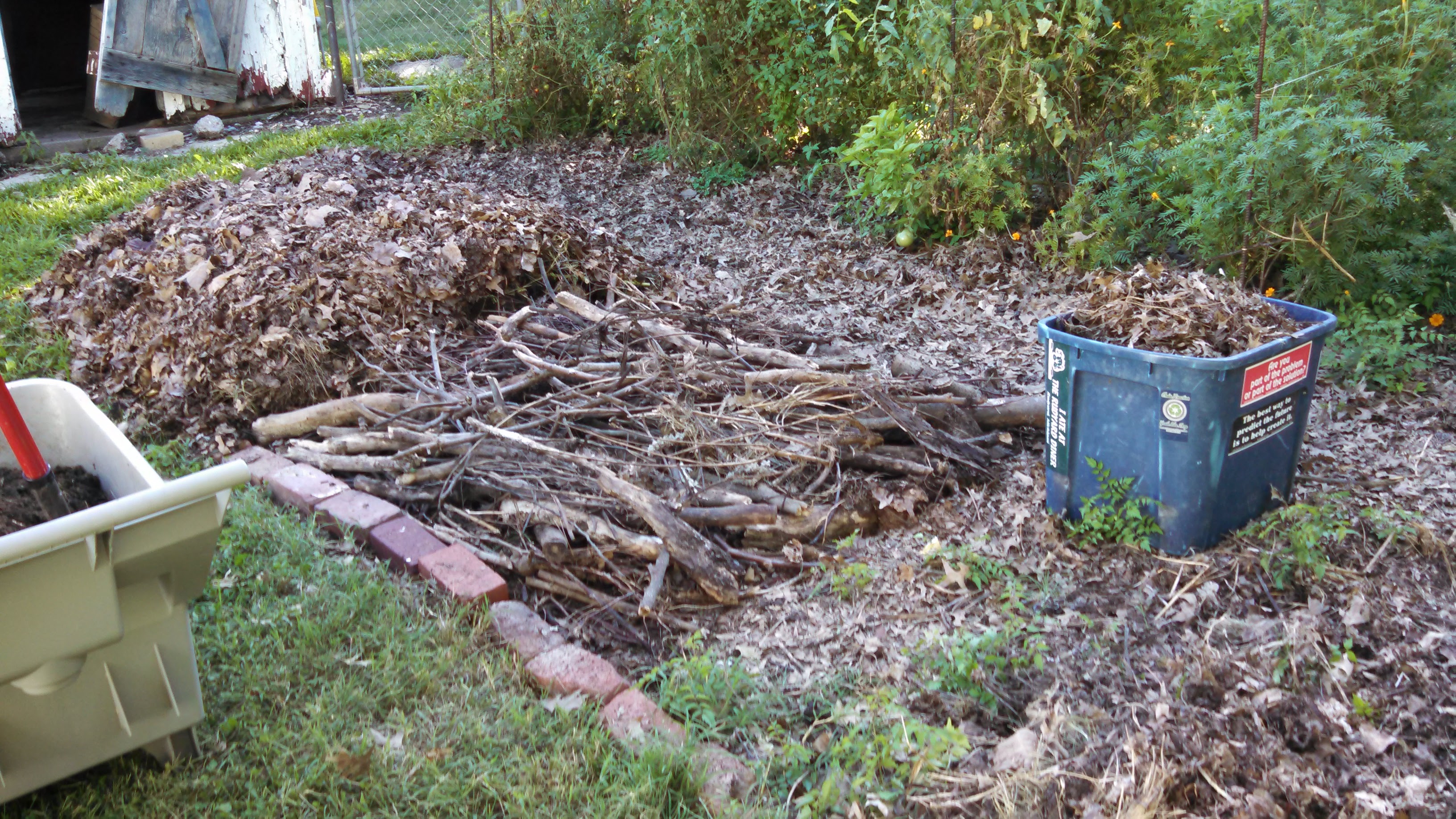
previous year’s sheet-mulched garden in background
When I took the woody beds apart, I was surprised to find that almost half of the wood I remembered putting in there less than three months earlier had already decomposed, along with all the green matter. I was pleased to find no evidence of termite activity — termites are a major concern here, and I’ve hesitated to implement hügelkultur for that reason.
It remains to be seen how effective this second attempt will be at discouraging the vines, but the main lesson I’ve learned is that attempting to smother them while they are not dormant is an exercise in futility. This is a change from my previous advice, to sheet mulch when green matter is abundant and ideally before it goes to flower, let alone to seed. That approach works well on less persistent weeds, but for woody perennials such as trumpet vine, timing appears to be everything!
Do you have experience fighting an aggressive perennial in your garden? I’d love to hear what worked for you!
- Log in to post comments




